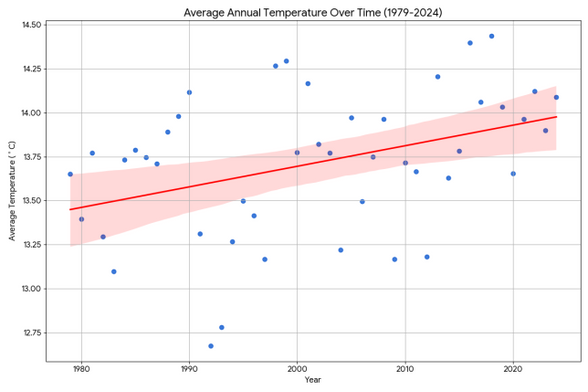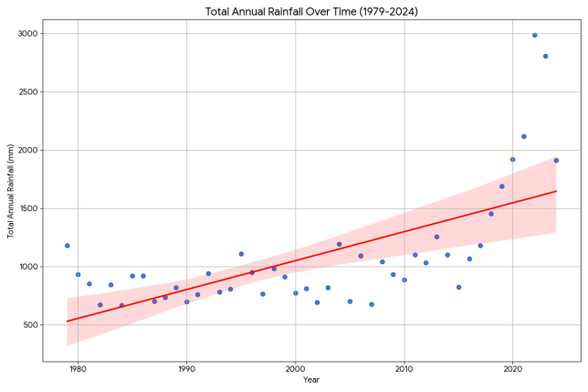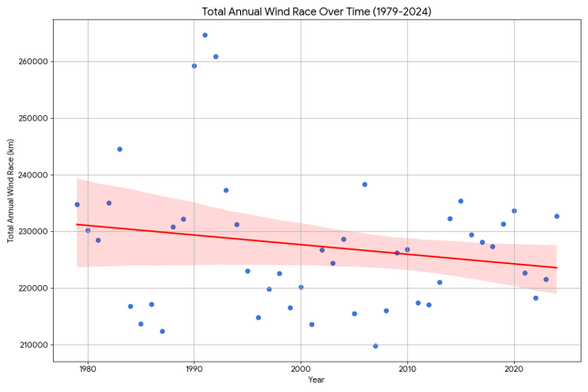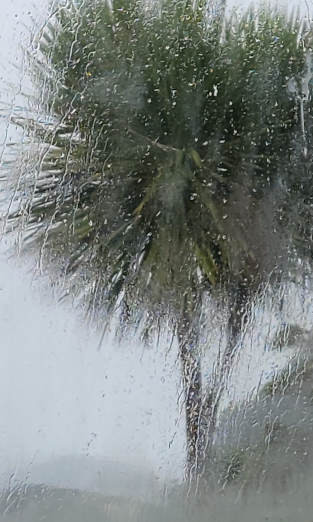Armchair climatology: Wellington
Most of us acknowledge that catastrophic global warming is one of the most significant existential issues ever to face our species. But we tend to talk about it in the abstract, basing our information on international research, which seems distant from our hom…
https://dave.moskovitz.co.nz/2025/08/25/armchair-climatology-wellington/
#wellington #ClimateChange #AI #Gemini #GlobalWarming #GenerativeAI #weather #climate #climatology #openweathermap #temperature #wind #precipitation
Recent searches
Search options
#openweathermap
@dwd können Ehrenamtliche ihre kleinen Wettermesstationen eigentlich auch zu euch einspeisen lassen? So in etwa wie bei #wunderground oder (damals) #openweathermap ?
A CRT Display for Retro Weather Forecasting - It would be hard to find any electronics still in production which use CRT displa... - https://hackaday.com/2025/05/31/a-crt-display-for-retro-weather-forecasting/ #theweatherchannel #openweathermap #weatherdisplay #classichacks #raspberrypi #crtdisplay #retro #crt
¿Qué significan `"current"`, `"cnt01"`, `"cnt02"`, `"cnt03"` en el script?
Estos valores indican distintos datos meteorológicos obtenidos de la API de OpenWeatherMap:
- `"current"` → Clima actual en tiempo real.
- `"cnt01"`, `"cnt02"`, `"cnt03"` → Pronósticos a futuro o históricos.
OpenWeatherMap entrega pronósticos en intervalos de 3 horas:
- `cnt01` → Próximas 3 horas.
- `cnt02` → Próximas 6 horas.
- `cnt03` → Próximas 9 horas.
@IGVazquez @fdroidorg @openmeteo
Currently i use
Breezy Weather (A powerful, open-source Material Design weather app.)
https://f-droid.org/packages/org.breezyweather/
There were other nice apps in the past, but after the change regarding #OpenWeatherMap, for me no longer useful. Using more #OpenMeteo now.
See also @nordwetter

Aloha.
#OpenWeatherMap schraubt an seiner #API herum... was zunächst nach schlichtem Update von v2.5 auf v3.0 erscheint, erfordert allerdings nicht nur technische Änderungen, sondern auch vertragliche. Enttäuschender Eindruck. "Open" ist da immer weniger.
Frage mich, was das für Auswirkungen auf Apps hat, die aktuell auf OWM setzen.
Ich arbeite für meine Nutzung an einer Umstellung auf #OpenMeteo... die sympathischerweise auch im #Fediverse vertreten sind: @openmeteo@fosstodon.org
Damit sollte beispielsweise @nordwetter@mastodonien.de u.a. rechtzeitig genug umgestellt werden können.
️ &
Very, Very Frightening; we-go; CARROT AR Wx
2023 was a terrible weather year and 2024 has already been a doozy in terms of chaotic weather events. So, we’ll take another opportunity, today, to peek at some weather info and utilities.
TL;DR
This is an AI-generated summary of today’s content.
Perplexity failed to include the links, again.
Today’s edition discusses weather-related topics and utilities. Here is a concise summary of the main sections:
- AEM 2023 United States Lightning Report: The report highlights the increase in lightning activity across the U.S. in 2023, with more than 92 million lightning flashes. It also discusses rare lightning activity in Alaska and the potential for Arctic lightning to double by the end of the century.
- Thundersnow in California: This rare phenomenon occurred when a cold air front collided with a moist atmospheric river from the Pacific, resulting in higher snowfall.
- Weather Utilities: The blog post introduces two weather utilities, We-go and CARROT AR Wx. We-go is a Go-based terminal weather client that provides a convenient way to access weather forecasts directly from the command line. CARROT is a weather app with an augmented reality (AR) mode that offers a more immersive weather experience.
️ &
Very, Very Frightening
The AEM 2023 United States Lightning Report contains some interesting notes about the lightning (and, thunder) activity across the U.S. in 2023. The report first shows that the U.S. experienced well over 92 million lightning flashes that year, which represents an increase of 6.6% over the prior year.
An unexpected (for me) finding in the report is the rare lightning activity in Alaska. AEM’s “Earth Networks Total Lightning Network” (ENTLN) recorded 23,616 lightning pulses, which comprised 16,505 flashes. This lightning activity was unusual for Alaska, as it ranks last among all U.S. states for lightning density and is in the bottom 10 for its total lightning count, despite being the largest state in terms of land area.
The lightning activity from a single 24-hour period accounted for about 31% of the state’s entire lightning activity for the year. AEM’s researchers predict that Arctic lightning could double by the end of the century. This increase in lightning activity led to about 30 new fires across Alaska, causing the total burned area to increase from 2,000 acres on July 20 to more than 290,000 acres by the end of the month.
Another notable event highlighted in the report is the thundersnow in California. This rare phenomenon occurred when a cold air front dropping down along the California coastline was projected to collide with the moist atmospheric river from the Pacific. The atmospheric instability that gives rise to thundersnow also tends to result in higher snowfall, which is precisely what was observed in this case.
As the climate warms, events like the lightning storm in Alaska may become less exceptional. This means risk managers across the U.S. are going to need to prepare for and manage the risks associated with increased lightning activity.
There’s quite a bit of data buried in JavaScript containers in the site. I found the map data pretty intriguing (one of the maps is in the section header), and hacked together a bit of R to yank them out. That code is below, and the data is on my main site.
library(V8)library(janitor)library(rvest)library(stringi)# Read in the AEM site URL (the `?…` bit seems to be necessary)pg <- read_html("https://aem.eco/2023-united-states-lightning-report/?_hsmi=289823499")# Find all the mapshtml_nodes(pg, xpath = ".//script[contains(@src, 'Map.js')]") |> html_attr("src") -> aem_map_urls# Snakecase f_t_waem_map_urls |> stri_replace_last_regex( pattern = "\\.js\\?.*$", replacement = "" ) |> basename() |> make_clean_names() -> aem_map_names# Read in all the maps JSaem_map_urls |> lapply(readLines) |> setNames(aem_map_names) -> aem_js_maps# Start a new JS contextctx <- v8()names(aem_js_maps) |> sapply(\(.map) { # Find the "data:" start line and the closing JS array lines start <- which(stri_detect_fixed(aem_js_maps[[.map]], "data:")) end <- tail(which(stri_detect_fixed(aem_js_maps[[.map]], "],")), 2)[1] # Clean them up so we can eval them aem_js_maps[[.map]][start] <- stri_replace_first_fixed(aem_js_maps[[.map]][start], "data:", sprintf("const %s =", .map)) aem_js_maps[[.map]][end] <- stri_replace_last_fixed(aem_js_maps[[.map]][end], ",", "") # Eval the JS in the context we made ctx$eval(aem_js_maps[[.map]][start:end]) # Retrieve the value ctx$get(.map) }) |> jsonlite::toJSON() |> writeLines("aem-maps.json") we-go
We-go (a.k.a., wego), is a golang weather client for the terminal written in. It provides a convenient, “no-frills” way to access weather forecasts directly from the command line. You can see the forecast for 1-7 days and configure preferred units.
It supports multiple “backend” weather sources (caiyunapp.com, openweathermap, smhi, worldweatheronline), including the ability to provide your own JSON source.
Output options include an ASCII art table, emoji, JSON, or markdown.
While it is “yet-another” CLI weather client, this one seems super flexible and hackable. The source is very grokable and you may enjoy a challenge to add an interface to Apple’s WeatherKit (I may try that, too).
The first run generates a config file that you can edit to adjust the default behavior.
CARROT AR Wx
I CARROT enough to give it a prominent spot on my Apple device screens and use it daily.
My weather info needs are focused on data values, so I only recently discovered CARROT’s augmented reality (AR) mode. It’s more kitschy than useful, but it’s kind of fun being berated (and informed) on-device and in virtual meatspace.
It’s worth the coin for a subscription, and you can see a snap of the AR mode in the section header.
FIN
Remember, you can follow and interact with the full text of The Daily Drop’s free posts on Mastodon via @dailydrop.hrbrmstr.dev@dailydrop.hrbrmstr.dev
https://dailydrop.hrbrmstr.dev/2024/01/24/drop-407-2024-01-24-talk-about-the-weather/
Ma Plongée dans l'essentiel avec Weather, minimaliste & open-source
https://petitpouyo.fr/ma-plongee-dans-lessentiel-avec-weather-minimaliste-open-source
par @petitpouyo
#Vancouver #Weather #OpenWeatherMap
Vancouver, British Columbia, Canada
Current Temp 12.99 Celsius
Feels Like Temp 12.64 Celsius
Wind Speed 3.09 m/s
Weather broken clouds
#Kelowna #Weather #OpenWeatherMap
Kelowna, British Columbia, Canada
Current Temp 12.4 Celsius
Feels Like Temp 11.42 Celsius
Wind Speed 1.54 m/s
Weather haze
#Vancouver #Weather #OpenWeatherMap
Vancouver, British Columbia, Canada
Current Temp 15.78 Celsius
Feels Like Temp 15.11 Celsius
Wind Speed 1.03 m/s
Weather few clouds
@kuketzblog
Ich habe bei Wetter-Apps lange nach etwas gesucht, dass einen lokalen Wetterradar bietet und bin da irgendwann bei #RadarWeather gelandet:
https://f-droid.org/de/packages/org.woheller69.weather/
Braucht einen kostenlosen API.l-Key der #OpenWeatherMap.
Einziger Negativpunkt wäre höchstens die Nutzung von Komoots #Photon-Dienst beim Hinzufügen von Standorten
Current weather report by OpenWeatherMap for Makati City, Philippines.
* Temperature: 32.53℃
* Heat index: 39.53℃
* Humidity: 68%
* Pressure: 100.9 kPa
* Wind: W 25.98 km/h
* Gusts: 20.92 km/h
As of: 2023-05-14 16:06:22 ACT (UTC+8)
It's the height of summer here (we only have 2 seasons), and we're transitioning from La Niña to El Niño.
I guess the brief rainy days are over here in the #Philippines. Back to full time #summer season. T_T
* According to #OpenWeatherMap, the heat index is at 39.11℃.
* While according to #DarkSky, the heat index is 36℃.
As of 13:27 ACT (#ASEAN Common Time).
#Pilipinas #Filipinas #ElNiño year
As of 2023-04-01 15:17:00 ACT (#ASEAN Common Time):
Temperature: 34.43℃
Heat Index (feels like): 39℃
Location: #Makati City, #Philippines
Provided by: #OpenWeatherMap
We're only at the beginning of the summer/dry season. (We only have two seasons, summer/dry and rainy/wet.) It's also expected our rainy/wet season will be affected by the coming #ElNiño phenomenon. So… yeah… we'll more likely get an extended summer/dry this year.
It's now 40.79℃ #HeatIndex (#FeelsLike) here in #Makati #Philippines.
(2023-03-24 15:30 ACT)
Let's drink water, and take a shower!
(#OpenWeatherMap data)
2023-03-23: #HeatIndex 42℃ #Cotabato City #Maguindanao (#PAGASA)
2022-03-17 (last year): #FeelsLike 53℃ #Dagupan #Pangasinan (PAGASA)
Today, 2023-03-24, heat index is at 39.84℃ here in #Makati #Philippines, according to #OpenWeatherMap.






